Since the ZEITI – Zambia’s local chapter of the Extractive Industries Transparency Initiative (EITI) – began its work in Zambia in 2009, anyone with the will and an Internet connection can access comprehensive and independently-audited data about activities across the mineral value chain. This means everything from information about exactly how much companies pay in taxes and mineral royalties, to the sums received by Government.
In Part 2 of this interview with Mr Ian Mwiinga – National Coordinator and Head of Secretariat at the ZEITI – we find out about the newest metric to be added to ZEITI’s datasets, the ‘G-Factor for Natural Resources’. Mr Mwiinga also shares how the organisation’s work has gone far beyond financial reporting to provide oversight and encourage transparency into every aspect of Zambia’s mining sector.
***
Zambia’s economy remains undiversified, with a significant reliance on mining. Perhaps because of this, there’s a perception that Zambia does not benefit enough from its minerals. This often has a bearing on the national policy debate – in particular on matters like mining taxation, local content, foreign direct investment, and questions of ‘ownership’.
To what extent does ZEITI’s work seek to address the ‘information gap’ or ‘perception gap’ and/or a lack of transparency with regards to the mining industry’s contribution?
You are right that this can be an emotive subject and perceptions are often strongly held – but not well-grounded in data. I think we can all agree that the basis of good policies is high quality data. ZEITI is a data repository, so the contribution of the ZEITI to an informed public discussion, and also informed policy formulation, is critical.
But, importantly, EITI’s data doesn’t end at tax payments. We also provide a context, as I mentioned previously.
“You are right that this can be an emotive subject and perceptions are often strongly held – but not well-grounded in data.”
In recent years, ZEITI’s work has gone far beyond publishing data on Zambia’s mineral production and the taxes paid on these minerals. How does ZEITI provide oversight and encourage transparency into different aspects of Zambia’s mining sector, and/or contribute in other ways?
That’s correct. We don’t only contribute to the conversation on fiscal policy, but also its implementation. For instance, we’ve provided training and support to various agencies in financial modelling, with our colleagues at Open Oil and InVhestia Africa Limited. ZEITI brought in consultants to train members of staff from agencies working in the mining sector, like the Zambia Revenue Authority, the Bank of Zambia, and the Chamber of Mines – and we also invited industry and civil society. We understand that it’s not enough just to disclose data, but to enable that disclosed data to then be utilised by agencies.
In terms of specific policy contributions, the EITI has been an active advocate of reforms around beneficial ownership transparency, which is under the Companies Act. This has come to bear while working together with the Patents and Companies Registration Agency – PACRA, for short – which is the companies registered under the Ministry of Commerce. The support that we’ve given to agencies such as PACRA that are dealing with beneficial ownership transparency has enabled them to be ready for Zambia’s IMF program, to a large extent.
Another example of where ZEITI’s data can really contribute is in the conversation around local content. We’re hoping to publish and disclose information on local content – for instance, the expenditures, the players, and the ownership of the companies that are participating. We also plan to share data on the Supplier Development Programs (SDP), in terms of how much is being spent by a particular mining company and what it’s being spent on.
On the environmental side, we profile the companies that make contributions to the Environment Protection Fund. We also look at the value of the fund and the governance of the fund itself.

A new metric was added to ZEITI’s dataset a couple of years ago – ‘the G-Factor for Natural Resources’. Please would you explain what this is?
In my view, the G-Factor is a game changer. This metric effectively shows you how much mining value remains in the community, how much of that value is actually taken to the treasury, and how much value the company that’s running the operation gains. It’s expressed as a percentage, using this formula: Government receipts ÷ Company revenue × 100. It gives us this very complex picture in a one-pager, and it’s a very easy to use metric.
Does “mining value” refer specifically to financial contributions made by mining companies?
There are instances where a company contributes cash, and also instances when the company gives in-kind payments. The interesting part is that the contribution towards something like training athletes has a multiplier effect for the community. A company might be bringing in the skills, but in some instances, they’re actually building an ecosystem of businesses that then can support that initiative.
But what’s crucial about the G-Factor is the fact that, for the first time, you have a conversation about what sort of contribution in monetary terms is made at the local level.
“But what’s crucial about the G-Factor is the fact that, for the first time, you have a conversation about what sort of contribution in monetary terms is made at the local level.”
How is this ‘G-Factor’ data collected, and in what ways does this metric add value and/or oversight to the range of data that ZEITI shares in its annual report?
We send companies a template to fill out, and there’s a similar template that we send to the Zambia Revenue Authority for reconciliation purposes. Then, once we have that data in one place, we do the calculation using the G-Factor formula.
After the calculation is done, we do a ranking of sorts. It’s like a league table, and it’s very interesting to see where each company ranks. But we also explain that we are comparing ‘like for like’. Companies that mine base minerals, for example, and companies in the coloured gemstone space should be compared in their own right. In terms of its deployment, we publish the G-Factor in our report, but we also have a live data set on our portal, which is visualised with graphs.
I would encourage other jurisdictions within the EITI – and beyond – to adopt the G-Factor metric. It’s a very quick way of understanding and demonstrating the value of investment in the mining sector to the public. It would be of huge benefit to academics and research students to explore further.
As I mentioned, the EITI prides itself on being a data-driven initiative. All the conversations converge around a table where data is the main subject of discussion. For me, that’s really the future of transparency and accountability.
See also: Financial Flows: Where does the money from mining go?























